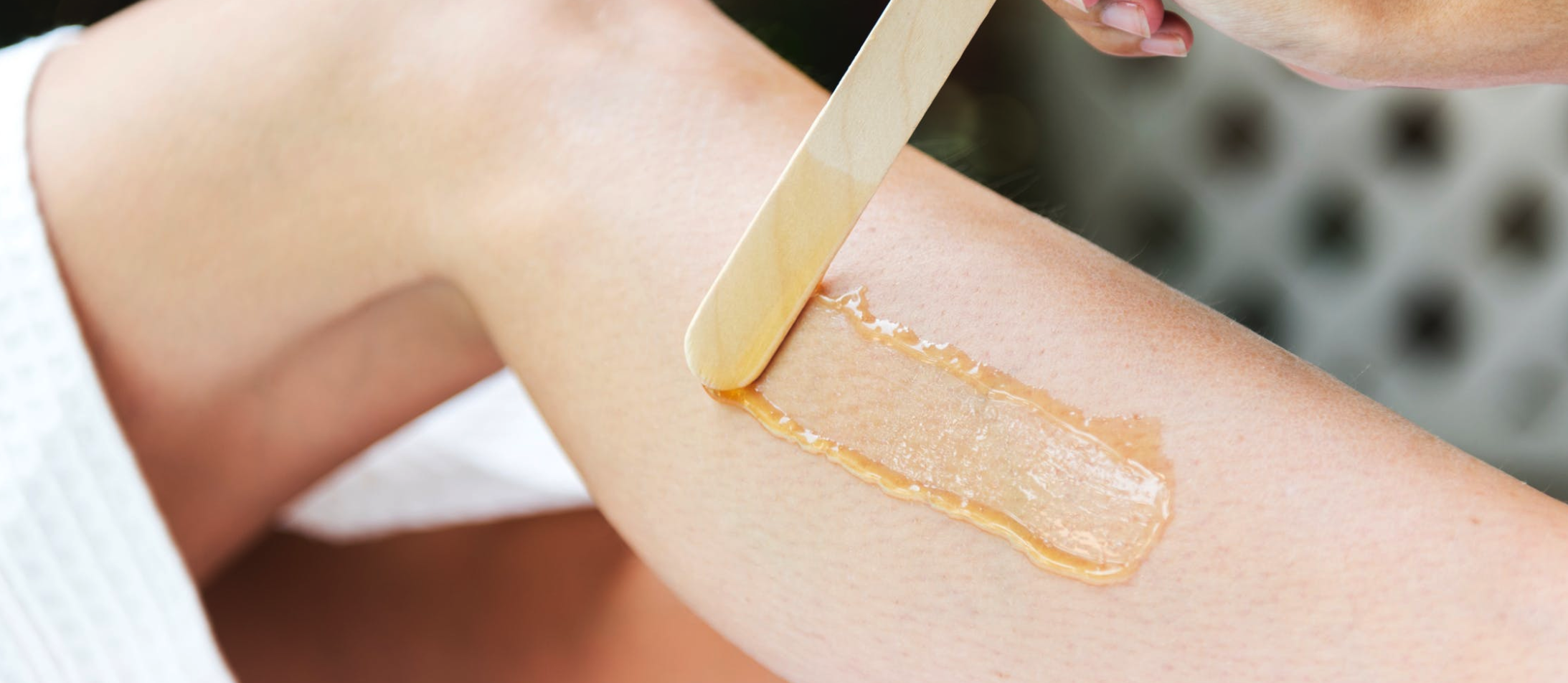Body Waxing FAQ
Are you new to the world of waxing? Or maybe you’re a seasoned pro, but you still have some questions on your mind? Whether monthly leg waxing or a one-time hard wax on your face, here are some of the most common questions that we get – along with some valuable information that will help you out before you come in for your appointment.
1. Does waxing hurt?
Well, it really depends on who you ask! Some people find it painful, while others say that they hardly notice. It really comes down to personal pain tolerances, your genetics for hair depth and thickness, and how often you get the waxing done. Generally, the first one or two appointments are the most noticeable, but after that it gets less noticeable as your skin and follicles adapt. Our clients say that it is painless when compared to getting a tattoo and any sense of pain you feel from waxing goes away almost immediately.
2.What is the waxing process?
There are two types of wax that we use, with slightly different techniques. With the first, strip wax, we first apply a thin layer of very sticky, warm wax to the skin, and use a spreader to fan it out over a small area. Then, a soft cloth is placed on top, which sticks to that wax. When you’re ready, we quickly remove the cloth – and all the hairs that come with it.
The other type, hard wax, is usually only used on the face, nostrils, and ears. It’s a wax that has been melted and feels warm to the touch, and we simply spread it on to the skin and leave it for a minute to harden. No cloth is attached with this technique – we just take an edge of the hardened wax and pull it off quickly. Here’s a hard wax pro tip: it won’t remove the top layer of dead skin cells like the sticky strip wax does, so usually people find it much less irritating.
3. How long will the results last?
This will depend on the rate of hair growth, which differs greatly for everyone. In addition, the longer you have regularly waxed, the slower your body will replace it (and the smaller and finer it will be), so that affects the frequency of appointments as well. For most people 4-8 weeks is a typical time frame between waxings.
After being waxed, you may notice some hairs grow back more quickly than others and this is because of the hair growth stage they were in when you were waxed – e.g., there may have been a baby hair just under the surface of the skin which cannot be removed until it emerges. In instances like that, those new hairs can show up earlier than the majority that were pulled out. Generally, you may notice some very fine hair growth within the first week, but it will take longer for any major growth to occur.
4. How can I prepare my skin for the waxing?
You are not required to shower immediately before your visit, but if you do, make sure you aren’t scrubbing too hard on your skin – if it’s already irritated before you arrive, the waxing will irritate your skin. Hold off on any exfoliants for a few days prior as well, but as far as moisturizer goes, you can follow your normal routine. The main thing to remember is to not irritate your skin for a couple days before or after your waxing appointment.
5. What should I expect afterwards?
Due to increased stimulation, your skin may look red, but that will soon disappear. It will feel incredibly smooth – you’ll be tempted to touch it! – but try not to do so, because your fingertips will push oils and bacteria into open follicles and cause breakouts.
As the hair starts to grow back, you may experience some bumps or ingrown hairs (often caused by plugged follicles and excess oil in the follicles), so keep your skin clean and do very gentle exfoliation to help the hairs grow out. We have a fantastic product called Carrioff for just this situation, which you can pick up on the way out to help avoid ingrowns. Whatever you do, do not pick at the hairs to “help” them – bacteria and oils on your hand or under your fingernails are not hair- follicle-friendly.
6. What kind of wax is used?
While many may think immediately of beeswax, the actual main ingredient in hair removal wax is rosin, which is the solid form of resin, the sap of coniferous trees. Depending on the specific brand, type, and usage of the wax, other ingredients such as vitamin E and chamomile are added to the rosin in order to boost the health of your skin.
7. How long should my hair be?
For an ideal experience, your hair should be just over half a centimeter in length when you come in for your waxing appointment. This gives enough hair for the wax to adhere to so that it can be removed. If the hair is too short, the wax will not have enough surface area to grab and will result in the hair breaking off instead of being removed from the root – meaning you’ll have to wait for it to grow out before you can try again. If, on the other hand, the hair is too long (over 1.25 cm), it starts to layer on top of other hairs below it, and the wax will be unable to get proper coverage on the surface area. This results in missed and broken hairs. Additionally, strip wax can only be applied once (to avoid damage to the skin), so any missed hairs will need to be plucked to make the area hairless. If need be, trim your hair before your waxing appointment – it makes our job, and your experience, much easier!
Learn more about our body waxing services or if you are not a fan of waxing but want a hairless area on your body may want to consider our laser hair removal services. Laser hair reduction is a fantastic alternative to waxing – and much more comfortable with longer lasting results. Whatever hair removal procedure you choose (waxing, shaving, laser) feel free to contact us if you have any further questions. We loving helping people get the result they are wanting!


